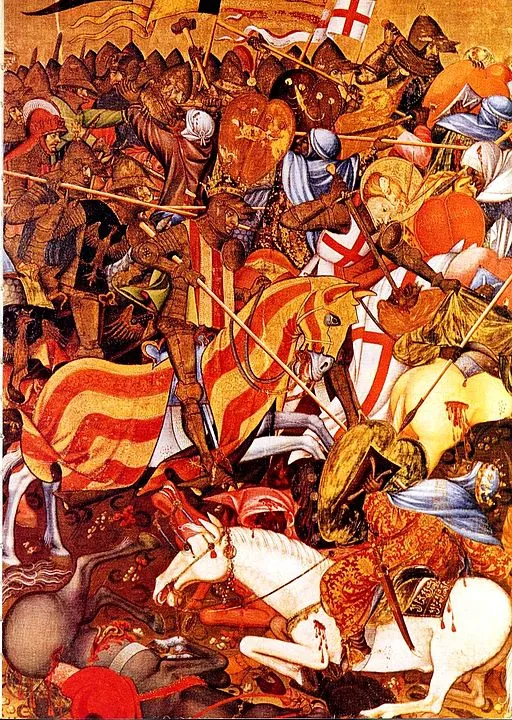As next Tuesday (23rd April) is St George’s Day (San Jorge), I thought one of Spain’s favourite saints deserved a look in. Naturally, he has some competition. But St George vs St James — no contest, right? Well, as ever it depends from where you’re looking, especially if you’re on the Camino Aragonés or Camino de Levante.

The common equestrian image of Santiago as Matamoros (The Moorslayer) depicts him descending from the sky at the alleged Battle of Clavijo (844) to save the army of Ramiro I of Asturias from vastly superior opposing Muslim forces. From then he became a patron of the Christian kings of the north in their so-called Reconquista (the (re)conquest of the Muslim-controlled lands of Iberia in the Middle Ages). Or so that’s how the later story goes. The battle may never have taken place and the story seems to date from the twelfth century (i.e. after the pilgrimage to Compostela had already gained traction). Meanwhile Saint George (San Jorge) had supposedly appeared at the Battle of Alcoraz (1094–6) to help Pedro I of Aragón and Navarra to take the city of Huesca (a city in modern Aragón) from the Muslims. If Santiago was the patron of the Spanish and an active promoter and implementer of the Reconquista, then why wasn’t he there to help Pedro?
That two different saintly patrons are depicted engaging in the same activity is not unusual, but in this case it points to the Reconquista not being a unified event or process, and to the evolving rivalry between the kingdoms of Aragón and Castile (which by the eleventh century incorporated Asturias), the two great powers of the Iberian peninsula. In fact, the crown of Castile fought alongside the Muslim forces against Pedro I at the Battle of Alcoraz!

Modern Spain is essentially the fusion of the crowns of Castile (the largest of the Iberian kingdoms by landmass) and Aragón (a substantial Mediterranean power), following the marriage of Isabella of Castile and Fernando II of Aragón (they who patronized Columbus’ voyages and built the Hospital de Los Reyes Católicos on the Plaza de Obradoiro in front of the cathedral of Santiago de Compostela). That Santiago became the patron of Spain rather than George, is as much the triumph of Castile over Aragón, as it is of the Christian princes of the north over their southern Muslim neighbours.